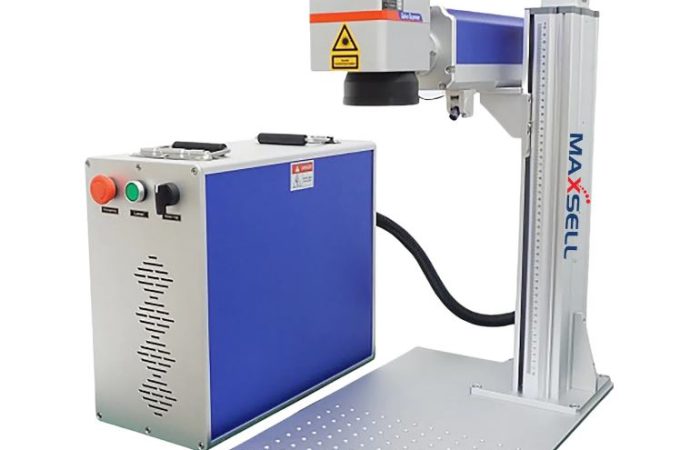Introduction Hallmarking has long been a cornerstone of the precious metals industry. It assures buyers of the purity and authenticity of metals like gold, silver, platinum, and palladium. Traditionally carried out through mechanical stamping, hallmarking has undergone a remarkable evolution with the advent of laser technology. Today, modern hallmarking machines not only offer unmatched precision
Introduction
Hallmarking has long been a cornerstone of the precious metals industry. It assures buyers of the purity and authenticity of metals like gold, silver, platinum, and palladium. Traditionally carried out through mechanical stamping, hallmarking has undergone a remarkable evolution with the advent of laser technology. Today, modern hallmarking machines not only offer unmatched precision but also improve the aesthetics, traceability, and compliance of precious metal items. Among these innovations, laser-based machines have emerged as the industry’s preferred solution for marking purity on ornaments, bars, and coins.
How a Laser Hallmarking Machine Enhances Metal Authentication
The shift from manual or mechanical stamping to advanced technology is driven by the need for accuracy and durability in marking. A Laser Hallmarking Machine leverages focused laser beams to engrave essential data onto metal surfaces without causing deformation or damage. This is especially vital for intricate designs in jewelry where traditional stamping methods might compromise the structure or appearance of the piece. Laser marking is contactless, highly accurate, and can mark even microscopic details, including logos, serial numbers, purity indicators, and government-authorized symbols.
The use of laser hallmarking also enables high-speed processing, which supports mass production environments such as refineries, jewelry manufacturers, and hallmarking centers. These machines can be programmed to mark different types of precious metals with customizable data, making them versatile tools that meet regulatory and commercial demands alike.
Applications in Gold Marking
Gold is the most common metal requiring hallmark certification in many parts of the world. With regulations becoming stricter and consumer awareness growing, the demand for reliable gold hallmarking has soared. Laser hallmarking technology is widely used to engrave BIS (Bureau of Indian Standards) symbols, carat values, and year of marking on gold items.
Laser systems can easily mark small gold ornaments without compromising their finish. Whether it’s 22K bangles, 18K rings, or fine 24K gold coins, laser machines ensure uniformity and legibility across all products. They are also ideal for marking unique identification numbers, making it easier for manufacturers and consumers to trace each piece of jewelry back to its source.
Applications in Silver Products
Marking silver products presents unique challenges due to the softness of the metal and the tendency for oxidation. Laser hallmarking solves these issues with its non-invasive process. It leaves a clean and precise mark without physically touching the product surface, preventing any unwanted wear or blemishes.
From silver utensils and artifacts to delicate jewelry and investment bars, laser hallmarking is widely adopted across various categories. Since silver pieces often carry intricate patterns, the flexibility of laser beam control allows the hallmark to be engraved in small or irregular spaces without disturbing the artistic layout.
Marking Platinum and Palladium
Platinum and palladium are precious but less commonly used metals in mainstream jewelry. However, due to their high value and growing use in both industrial and ornamental applications, proper hallmarking is essential. Laser marking technology is ideal for these metals due to its ability to produce deep, high-contrast marks that remain readable over time.
In platinum jewelry, where white sheen and smooth texture are essential design features, laser hallmarking ensures no distortion occurs. It can add the purity grade, metal identification, and certification code with exceptional clarity, thereby strengthening consumer trust and enhancing brand credibility.
Regulatory and Compliance Marking
Governments and regulatory authorities across the globe require hallmarking to verify the authenticity and purity of precious metals. Laser machines are compatible with database-driven marking systems that automatically assign certification IDs, ensuring traceability in compliance with national and international standards.
In India, for example, the BIS has made hallmarking mandatory for certain gold and silver articles. Laser machines are integrated with government-authorized hallmarking centers to enable seamless, approved marking processes. In Europe, hallmarking practices are governed by assay offices under national laws, and laser hallmarking technology helps meet their rigorous standards.
Customization and Brand Identity
One of the biggest advantages of laser hallmarking is its ability to support customization. Manufacturers can engrave their brand name, logo, batch number, or QR code alongside the standard hallmark. This adds a layer of brand identity to the product and helps protect against counterfeiting.
For luxury brands and independent jewelers alike, laser hallmarking brings value by enhancing product traceability and authenticity. The ability to customize the mark design also opens up new avenues in marketing and product differentiation, giving businesses a competitive edge.
Applications in Bullion and Investment Products
Investment-grade precious metals such as gold and silver bars or coins must include highly detailed, tamper-proof information to gain market credibility. Laser hallmarking is widely employed by mints and refiners to etch weight, purity, serial numbers, and mint stamps onto bullion products.
Laser-marked bullion offers a strong layer of trust and verification to investors and traders. The technology ensures that every piece of metal is uniquely identifiable and easily auditable, reducing the risk of fraud or misrepresentation in the financial metals market.
Conclusion
Laser hallmarking has revolutionized the way precious metals are authenticated and marketed across the globe. Its ability to engrave minute and accurate details without compromising the structural integrity or beauty of gold, silver, platinum, or palladium items makes it indispensable in modern hallmarking facilities. Whether for regulatory compliance, brand building, or investor confidence, the applications of laser hallmarking machines span a wide array of use cases in the precious metals industry. As demand for verified metal products continues to rise, the role of precision laser technology in hallmarking will only grow stronger in the years to come.
















